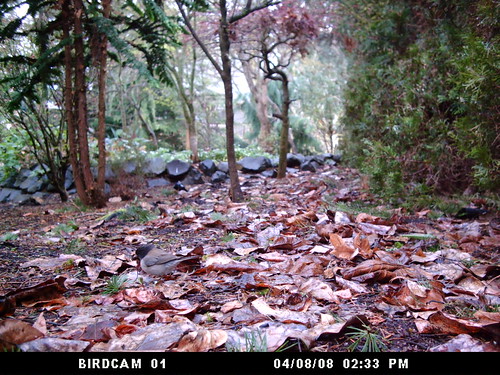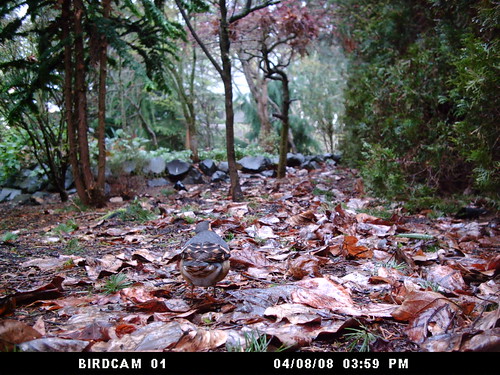For years I have been advocating that people, especially bird watchers, slow down if they truly want to appreciate the subtle wonders of the natural world. Occasionally, this slowing down sometimes requires the achievement of a complete stop.
Take the idea of the plumage color and pattern of some common birds. Under day-to-day observation, a bird may seem somewhat drab or not particularly remarkable in both color and pattern. Yet as we are most often observing them in a less than natural habitat – on a human-made bird feeder or against a fabricated background such as a patio – the true value of their plumage in concealing them is not readily noted.
However, if you could place yourself in a position where you ordinarily not find yourself, or perhaps even could not find yourself, the image you have of these same unremarkable birds may be forever changed. For this reason I placed my Wingscapes BirdCam down in the wet and fallen leaves near the edge of our property to try and capture some images of our more frequent avian visitors in a more natural environment. To be honest, I was actually simply seeking a better background for the finished image. What I discovered was something entirely more interesting.
All the images I downloaded after a day of the BirdCam being in this position were of Oregon form Dark-eyed Junco (Junco hyemalis) or Varied Thrush (Ixoreus Naevius). Ordinarily, the Juncos are noted below the feeders, along the garden paths, or in the minute patch of lawn in front of the house. Not exactly a flashy bird, yet not one I would have readily called cryptically colored. Yet when I saw the images of this species foraging amongst the rain-soaked fallen leaves, I was amazed at how well it blended into the ground cover.

The Varied Thrush was another matter entirely. The bold orange and black stripes and the larger size of these birds would initially be thought to make them stand out regardless of their surroundings. It had not occurred to me that though their orange patches are bold and their black stripes often glossy, so too are the colors of the fallen leaves that throughout the winter and well into spring remain thoroughly wet on the forest floor that these birds call home and through which they regularly forage for assorted invertebrates. (I realize the photo of the bird shown below is not the most photogenic side of the bird, but it is also the position from which the bird is the most vulnerable and thus most in need of cryptic coloration).

It’s all a matter of perspective – both visual position and chronological progression. In other words, get low to the ground, stop time with a camera, and you’ll be truly astonished at the things you can observe and from them learn.
Peace and good bird watching.
If you enjoyed reading this, please consider signing up for The Well-read Naturalist's newsletter. You'll receive a helpful list of recently published reviews, short essays, and notes about books in your e-mail inbox once each fortnight.
